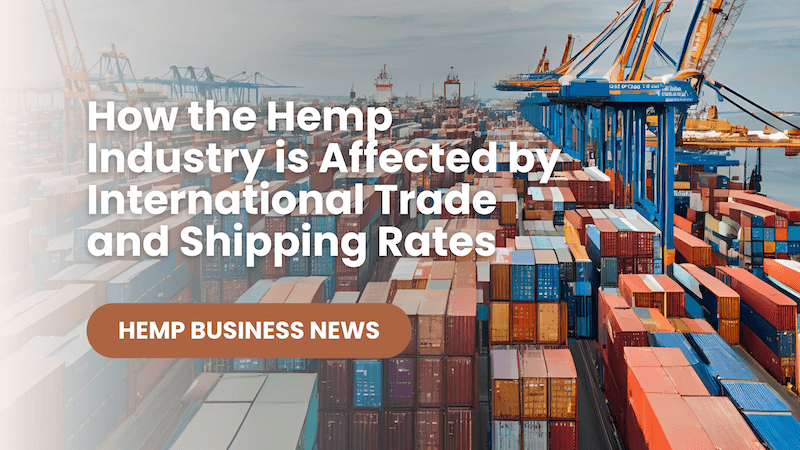How the Hemp Industry is Affected by International Trade and Shipping Rates
Posted: 06/01/22 | Author: Lawrence Serbin
You may be wondering why hemp fabrics aren’t made in the United States.
The reason for this goes back to 1937 when the Marijuana Tax Act outlawed cannabis, making it basically impossible to possess and sell cannabis-derived products.
Hemp Transport Economics History
These restrictions had prominent effects, one of them being the halt of the industrial hemp industry.
“It is more economical and environmentally friendly to transport products from China to Los Angeles overseas than from Los Angeles to San Francisco by truck.”
In the late 20th century, fabric production costs increased in the United States, while huge textile mills emerged in developing countries.
This led to companies sourcing raw materials and manufacturing overseas.
Around 1992, hemp fabrics were imported into the United States from China and Europe, reintroducing hemp fabrics to the American market.
While it may seem counterintuitive to ship items across the globe, it is more economical and environmentally friendly to transport products from China to Los Angeles by sea than from Los Angeles to San Francisco by truck.
A rule of thumb for shipping: high-value, low-volume products are easily shipped across the globe, while low-value, high-volume products are restricted to local areas.
While hemp prohibition ended in 2018 on the federal level, the fiber industry has yet to materialize.
While floral hemp doesn’t require large amounts of acreage to meet demand, thousands more acres of fiber hemp need to be planted to get the industry started.
Modern Day Challenges with Hemp Transportation
The current situation puts the industry between a rock and a hard spot.
“Farmers don’t want to grow large amounts of hemp unless they have factories to buy and process the fiber. While companies don’t want to build factories unless there is a sufficient amount of raw materials to keep them in operation.”
Farmers don’t want to grow large amounts of hemp unless they have factories to buy and process the fiber.
And companies don’t want to build factories unless there is enough raw material to keep them operational. The legalization of industrial hemp in the United States creates the opportunity for the industry to move forward. For example, high-quality hemp fiber and fabrics can be compressed into tight units, allowing them to be shipped across the country and the globe with minimal increase in cost.
The opportunity exists for farmers to grow hemp fiber domestically and export it to other countries for transformation into fabrics. The fabrics can then be shipped back to the U.S, either as whole or finished products for sale.
This model is currently being used with cotton grown in the United States. On the other hand, hemp cannot be grown solely for hurds, as its value is too low.
Products like hemp hurds, hemp insulation, or hemp boards are challenging to ship long distances while remaining competitively priced.
However, by growing hemp for high-value fiber and grain, the lower-value fiber and hurd can be used within the United States to produce hemp building materials.
This creates a win-win situation where each country does what it does best, and free trade allows these items to be purchased worldwide.
Free and fair trade will allow the hemp industry to grow and prosper.
